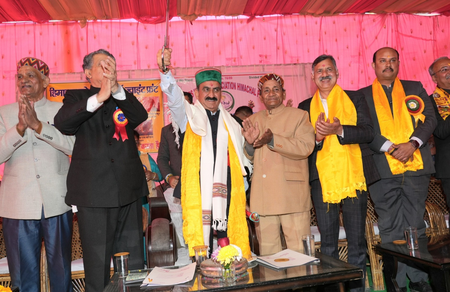
New Delhi, June 5 (IANS): The last 11 years have seen steady reforms introduced by the Government to make life easier and more dignified for the middle class, with steps ranging from tax relief that leaves more money in their hands to pension schemes that promise security in the old age, according to an official statement issued on Thursday.
The government has cut through red tape, simplified rules and made everyday systems work better. Be it filing taxes, buying a home, commuting to work or affording medicines, things have become simpler and more accessible.
These are not scattered changes but a pattern of reforms that speak to the real concerns of ordinary citizens. The government has not only respected the hard work of the middle class but also recognised them as key drivers of India’s growth, the statement said.
From lowering income tax rates to simplifying returns, every move has been aligned with the core idea of letting citizens keep more of what they earn, the statement explained.
The most recent tax reforms, especially those in the Union Budget 2025–26, are a clear sign that the Government has placed its trust in the middle class as a pillar of national growth.
Whether it is raising the income threshold for zero tax, introducing a simplified tax regime or making return filing easier than ever, the effort has been constant and focussed.
What stands out is not just the scale of reforms but the sense of fairness and recognition they carry for honest, hardworking taxpayers, the statement said.
Over the past 11 years, the income tax policy has steadily provided meaningful relief.
The Government raised exemption limits, introduced standard deductions, launched a simplified tax regime in 2020, and reduced paperwork. These efforts have added up to make life easier for taxpayers, the statement said.
In the Union Budget 2025–26, another major change was announced. Individuals earning up to ₹12 lakh annually will now pay no income tax, except on special incomes like capital gains. With the standard deduction of ₹75,000, even those earning ₹12.75 lakh will pay no tax.
The standard deduction reduces taxable income automatically by a fixed amount, easing the burden on salaried employees by lowering their overall tax liability without the need to claim multiple exemptions or submit detailed proofs.
This reform will benefit crores of salaried citizens. It shows a deep understanding of middle-class needs and comes despite the Government giving up nearly ₹1 lakh crore in revenue.
To make tax compliance easier, individual taxpayers are now provided with pre-filled Income Tax Returns. These returns include details like salary income, bank interest, dividends, and more.
This ease is reflected in the rise of individual ITR filings, which increased from 3.91 crore in FY 2013–14 to 9.19 crore in FY 2024–25. This growth shows that more people find it simpler and worthwhile to comply with tax laws.
For years leading up to 2014, rising prices kept middle-class families under constant strain. Between 2009–10 and 2013–14, inflation stayed in double digits. Essentials like food and fuel became increasingly costly, stretching household budgets and saving felt out of reach.
Looking over the decade from 2004–05 to 2013–14, the average annual inflation stood at a steep 8.2 per cent. This prolonged period of price instability made everyday life harder and planning for the future uncertain.
Inflation has come down to an average 5 per cent between 2015–16 and 2024–25 which has reduced the cost of living for people. Stable prices gave families breathing room.
Essentials became more affordable, and planning monthly expenses became easier. This shift was the result of sound policy, strong coordination with the Reserve Bank, and better supply side management.
The middle class, long hit by rising prices, finally found relief and regained confidence in the economy.
In a major step to strengthen social security for government employees and their families, the Union Cabinet approved the Unified Pension Scheme (UPS) on August 24, 2024.
The scheme ensures an assured pension of 50 per cent of the average basic pay drawn during the last 12 months before retirement, applicable to employees with at least 25 years of service. For those with shorter service tenures, the pension will be calculated proportionately, with a minimum qualifying period of 10 years, the statement added.
–IANS
sps/rad




